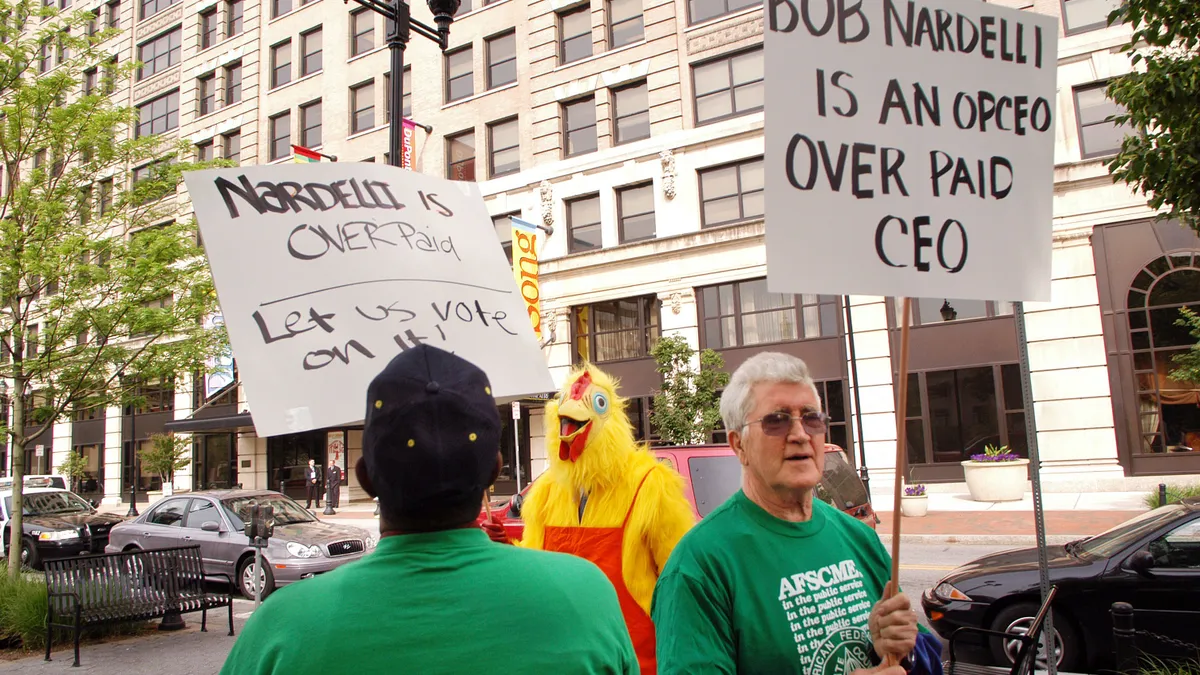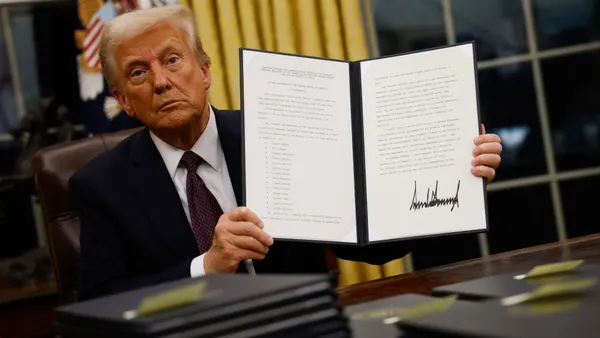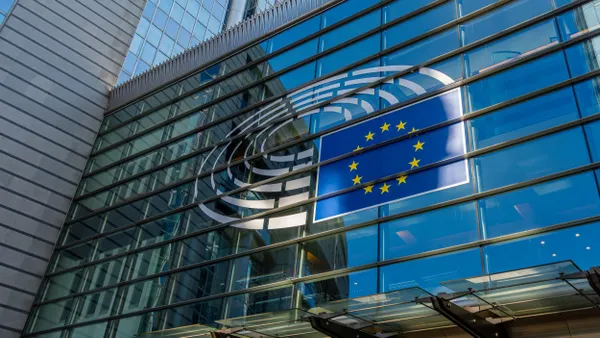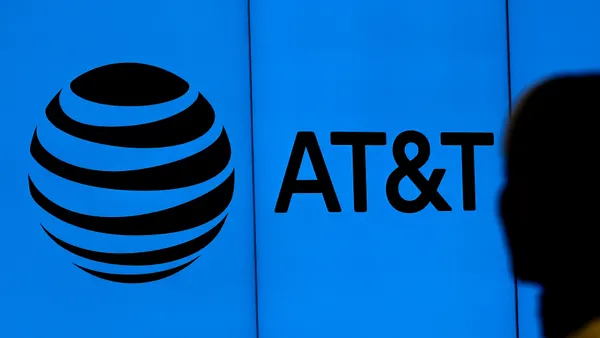Dive Brief:
- Extreme pay gaps between CEOs and workers undercut a company’s corporate bottom line by reducing employee morale and productivity and raising turnover rates, the Institute for Policy Studies and the Congressional Progressive Caucus Center said in a report last week.
- The study by the two progressive organizations indicates such wage disparities are a key driver of economic inequality in the U.S. and also widen gender and racial disparities, especially since women and people of color make up a disproportionately large share of low-wage workers and a small share of corporate leaders.
- The research also found CEO pay practices to be a governance issue as they “incentivize reckless behavior” that puts the economy at risk, noting the CEO pay system has rewarded executives for slashing jobs, manipulating financial data to inflate revenue, dodging taxes and partaking in other harmful actions.
Dive Insight:
The report cited several metrics that signaled how CEO-worker pay gaps have widened over time and why this disparity poses a problem to both society and the economy. The Institute for Policy Studies analyzed 100 S&P 500 corporations with the lowest median worker pay levels in 2022 and found that CEO pay in this sample averaged $15.3 million, while median worker pay averaged $31,672. The average CEO-to-worker pay ratio in this group was 603 to 1.
Similarly, data from the Economic Policy Institute found wage disparity has significantly increased over time: CEOs were paid 344 times as much as a typical worker in 2022, up from an average pay ratio of 21 to 1 in 1965.
The report said “executive recklessness” is detrimental to the economy, especially when propelled by CEOs aiming to achieve high levels of compensation. The report noted the 2008 economic crash that left millions of Americans homeless and jobless was caused, in part, by executives chasing huge bonuses. In the three years leading up to the financial crisis, the top five executives at the 20 biggest bailed out banks averaged $32 million in compensation, per research from the Institute for Policy Studies.
Further, the report said such pay disparities are “bad for business,” and found companies with overpaid CEOs and underpaid workers saw significantly higher levels of employee dissatisfaction and turnover and lower sales.
However, the researchers also point to recent government-led tax reforms and legislative proposals to rein in executive pay and lift up worker wages.
“People can use their power as workers, shareholders, and voters to rein in excessive CEO compensation and narrow the yawning gaps between executive and worker pay,” said Sarah Anderson, global economy project director at the Institute for Policy Studies and co-author of the report.
A U.S. Securities and Exchange Commission rule that went into effect in 2018 requires publicly held corporations to annually report the ratio between their CEO and median worker compensation. This disclosure rule sparked efforts at the federal, state and municipal levels to tie the pay ratio to tax policies, creating an incentive to curb the pay disparity between CEO and employee pay.
Cities that have applied such reforms within their regulatory framework include Portland, Oregon and San Francisco. In 2016, Portland adopted a pay ratio surtax on companies operating in the city that have CEO-worker pay gaps of 100 to 1 or higher, while San Francisco introduced the Overpaid Executive Tax, which went into effect Jan. 1, 2022 and generates revenue around $125 million per year.
Several bills have also been proposed on a federal level to curb such excessive executive pay. Earlier this month, Democratic lawmakers introduced the Curtailing Executive Compensation (CEO) Act to increase worker pay and limit “runaway CEO compensation.” This proposed legislation would apply an excise tax on public and private companies that have at least a 50 to 1 CEO-to-median-worker pay disparity. The proposal alleged that the CEO Act would have raised over $10.1 billion from the top 100 U.S. companies alone.










